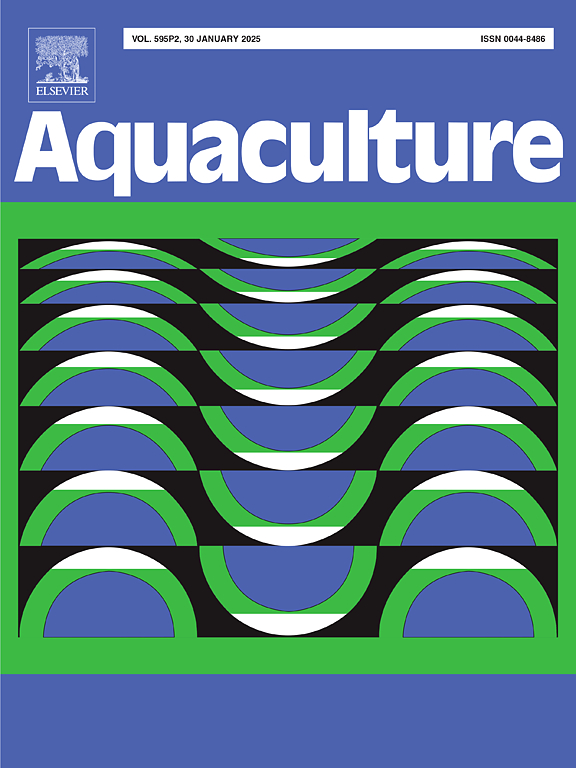Synergistic effects of arginine and calcium on astaxanthin and lipid accumulation in Haematococcus pluvialis under high light conditions
IF 3.9
1区 农林科学
Q1 FISHERIES
引用次数: 0
Abstract
Haematococcus pluvialis (H. pluvialis) is one of the richest natural sources of astaxanthin (AST). However, since the production of AST by H. pluvialis is unable to meet market demand, it is desirable to increase its productivity. This study provides an innovative strategy to improve astaxanthin and lipids productivity of H. pluvialis by combining arginine (Arg) and calcium (Ca2+) under 120 μmol m−2 s−1 light conditions. Application of Arg promoted astaxanthin and lipid accumulation by 25% and 24.5%, respectively. The co-supplementation of Arg and Ca2+ (0.25 mM Arg, 50 μM CaCl2) further enhanced the astaxanthin and lipid productivity by 40.7% and 32.6% compared to the control. Arg and Ca2+ synergically activated the arginine metabolic pathway by triggering ornithine decarboxylase (odc), ornithine aminotransferase (oat), nitric oxide synthase (nos) and argininosuccinate lyase (asl) genes at both stages of cultivation, signifying their importance in growth and stress responses. More importantly, Arg and Ca2+ synergically controlled signaling molecules through the calcium channels and promoted astaxanthin and lipids by regulating carotenogenesis and lipogenesis. The results therefore provide a reference for research and application of Arg and Ca2+ in microalgae aquaculture.

求助全文
约1分钟内获得全文
求助全文
来源期刊

Aquaculture
农林科学-海洋与淡水生物学
CiteScore
8.60
自引率
17.80%
发文量
1246
审稿时长
56 days
期刊介绍:
Aquaculture is an international journal for the exploration, improvement and management of all freshwater and marine food resources. It publishes novel and innovative research of world-wide interest on farming of aquatic organisms, which includes finfish, mollusks, crustaceans and aquatic plants for human consumption. Research on ornamentals is not a focus of the Journal. Aquaculture only publishes papers with a clear relevance to improving aquaculture practices or a potential application.
 求助内容:
求助内容: 应助结果提醒方式:
应助结果提醒方式:


